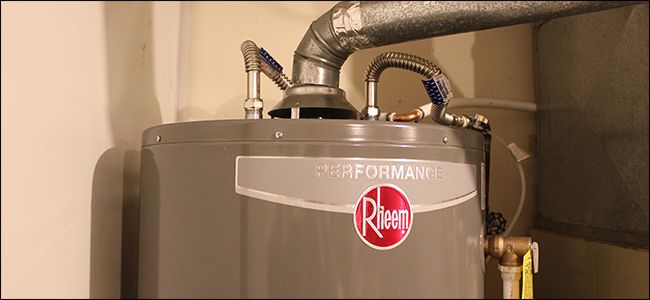Almost everyone maintains their own unique idea when it comes to How to Maintain a Hot Water Heater in a Few Simple Steps.

Hot water is crucial for everyday comfort, whether it's for a rejuvenating shower or washing meals. To ensure your hot water system runs efficiently and lasts longer, normal maintenance is crucial. This article gives useful suggestions and understandings on how to keep your home's hot water system to prevent disturbances and expensive repairs.
Introduction
Maintaining your home's warm water system may appear difficult, yet with a few basic steps, you can guarantee it runs efficiently for many years to find. This overview covers whatever from recognizing your warm water system to do it yourself maintenance ideas and knowing when to call expert help.
Value of Maintaining Your Hot Water System
Normal upkeep not only prolongs the life-span of your warm water system however likewise ensures it operates successfully. Neglecting maintenance can cause lowered effectiveness, greater power bills, and even premature failure of the system.
Indications Your Hot Water System Needs Upkeep
Knowing when your hot water system needs interest can stop significant issues. Watch out for indications such as irregular water temperature level, weird sounds from the heating system, or rusty water.
Comprehending Your Warm Water System
Prior to diving into maintenance tasks, it's practical to recognize the basic components of your hot water system. Usually, this includes the water heater itself, pipes, anode rods, and temperature level controls.
Regular Monthly Upkeep Tasks
Normal month-to-month checks can assist catch small issues before they escalate.
Purging the Hot Water Heater
Flushing your hot water heater eliminates debris build-up, enhancing performance and lengthening its life.
Monitoring and Replacing Anode Rods
Anode rods prevent rust inside the tank. Examining and changing them when worn out is essential.
Examining and Changing Temperature Level Settings
Changing the temperature level setups guarantees optimum efficiency and safety and security.
DIY Tips for Maintenance
You can carry out a number of upkeep tasks yourself to keep your hot water system in leading condition.
Checking for Leakages
Regularly check pipes and connections for leakages, as these can lead to water damage and greater expenses.
Checking Pressure Relief Valves
Checking the pressure relief valve ensures it functions properly and avoids extreme pressure accumulation.
Protecting Pipelines
Insulating warm water pipelines minimizes warm loss and can save energy.
When to Call a Professional
While DIY maintenance is valuable, some concerns need professional knowledge.
Complex Concerns Requiring Specialist Assistance
Instances include significant leaks, electric problems, or if your hot water heater is continually underperforming.
Routine Specialist Maintenance Perks
Professional maintenance can consist of complete examinations, tune-ups, and ensuring compliance with safety and security criteria.
Verdict
Normal upkeep of your home's hot water system is necessary for effectiveness, durability, and cost savings. By complying with these tips and recognizing when to seek professional aid, you can make certain a trusted supply of warm water without unanticipated disruptions.
How to Maintain an Instant Hot Water Heater
Before tinkering with your hot water heater, make sure that it’s not powered on. You also have to turn off the main circuit breaker and shut off the main gas line to prevent accidents. Also turn off the water valves connected to your unit to prevent water from flowing into and out of the appliance. 2. When you’re done, you have to detach the purge valves’ caps. These look like the letter “T” and are situated on either side of the water valves. Doing so will release any pressure that has accumulated inside the valves while at the same time avoid hot water from shooting out and burning your skin. 3. When the purge valves’ caps are removed, you have to connect your hosing lines to the valves. Your unit should have come with three hoses but if it didn’t, you can purchase these things from any hardware or home repair shops. You can also get them from retail stores that sell water heating systems. Read the user’s manual and follow it to complete this task properly. When the hosing lines are connected, open the purge port’s valves. 4. You should never use harsh chemical cleaners or solutions when cleaning your unit. Make use of white vinegar instead. It should be undiluted and you’ll probably use about 2 gallons. 5. Now flush your water heater. This task should probably take about 40 minutes. We can’t give you specific directions for this because the procedure is carried out depending on the type, model and brand of your heater. With that being said, refer to the user’s manual. 6. When you’re done draining the unit, you have to turn off the purge port valves again. Remove the hosing lines that you earlier installed on each of the water valves. Put the valve caps (purge port) back in their respective places and be very careful so as not to damage the rubber discs that are found inside these caps. 7. Now that everything’s back in place, check your user’s manual again to find out how to reactivate your water heating system. 8. Once it is working, turn one of your hot water faucets on just to let air pass through the heater’s water supply pipes. Leave the tap on until water flows smoothly out of it. https://www.orrplumbing.com/blog/2014/september/how-to-maintain-an-instant-hot-water-heater/

As an avid reader on What Kind of Maintenance Do Water Heaters Need?, I imagined sharing that excerpt was a good thing. Do you know somebody else who is inquisitive about the subject? Feel free to share it. Thanks so much for your time invested reading it.
Suggested Site